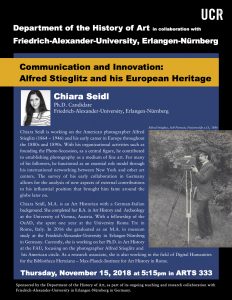Camilla Querin at the Getty Graduate Symposium

Art History Doctoral Candidate, Camilla Querin, presented at the Getty Graduate Symposium on January 26, 2019. The Getty Graduate Symposium comprises art history graduate students from California research universities: Stanford, UCI, UCLA, UCR, UCSD, UCSB, UCSC and USC. The students have been elected by faculty at their respective departments to represent their institutions. Each student gives a 20 minute talk followed by Q&A. Camilla’s talk was “Dialectics of Maladragem: When Arts Transform the Outcast into a Hero.”

 Getty Graduate Symposium
Getty Graduate Symposium









